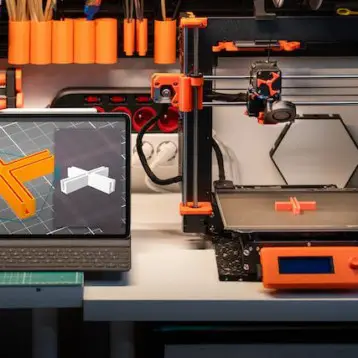Radio frequency (or ‘RF)’ is by no means a new advent — we’ve all heard of and likely listen to the radio, after all. Yet most of us don’t appreciate the importance of RF technology to modern electronics, from household items to large-scale industrial applications. Anything that receives or transmits a radio wave is technically an example of RF technology — including smartphones, Wi-Fi, and Bluetooth. It doesn’t end there though: technology innovation through the use of radio frequencies has been found to have real advantages in fighting the climate crisis by finding more sustainable energy sources.
Looking ahead, our ambitions not only for saving the planet but for fast communication and marvelous medical care will continue to be helped in some shape or form by this particular technology. In this article, we’ll explore what exactly RF technology is, why and how we use it, and what role it may play for us over the next decade or so.
What is RF technology?
RF is generated by electromagnetic radiation (the ‘radio’ frequency) and is what makes the wireless distribution of energy possible. It is not the only form of wireless power transfer, but the most widely used form.
An RF signal is produced by electromagnetic radio waves between 3 and 300kHz. These frequencies travel at light speed and are produced by natural energy sources such as lightning, sun flares and stars in space. While RF technology can refer to numerous applications, humanity has long harnessed the power of radio waves for communication and medical treatment in particular.
How does it work?
We mentioned earlier how RF is constituted by electromagnetic radiation, which involves both electric fields and magnetic fields. Electric fields are created by voltage — the pressure from a power source. Magnetic fields, however, are produced from electric current, which is the general rate of flow of electrical charge. An electromagnetic wave is what is produced by the ‘mutual regeneration’ of both these fields. In order to achieve this, there needs to be changes in both voltage and current.
Live Science explains that “electromagnetic radiation is created when a charged atomic particle, such as an electron, is accelerated by an electric field, causing it to move. The movement produces oscillating electric and magnetic fields, which travel at right angles to each other”. It is this oscillation that determines the frequency of radio waves.
When do we use it?
Most readers will have guessed that RF is behind wireless radio. The technology is found in semiconductors, which are vital parts of electronic components used in telecommunications, automotive, medical, and commercial applications.
As XP Power explains, RF is utilized for multiple manufacturing purposes, such as “industrial lasers, ultrasonic welding, and surface modification”. While in healthcare, radio frequency identification (RFID) is widely used to track and log data-encoded information tags for medical devices, property items, and patients — like a barcode.
For example, “electronic sensors in washing machines can transmit RF signals to the companion dryer’s receiver. Information such as load weight, water content and wash cycles used can help the dryer automatically calculate the drying time needed”.
Where is RF technology headed?
Energy-efficient power
RF technology has the potential to provide sustainable energy solutions. Currently, it is being used to develop metamaterial antennas, which can enhance the efficiency of existing devices beyond their normal limitations.
Metamaterials achieve this by converting low-intensity radio waves that can then be transformed into electric power in a more energy-efficient way. This is because they can absorb a higher amount of waves that then allow more voltage to flow through a device.
Self-driving cars
We’re not quite there yet, but it has been the ambition for many years to create a fully-autonomous vehicle. The path to get there will be paved with wireless comms and software processing made possible by radar technology. For example, an autonomous navigation and guidance system will be constantly active and alert to the car’s location, and able to carry out recomputation in real-time.
Cadence System Analysis asserts that “cameras, LiDAR (light detection and ranging), and RADAR (radio detection and ranging) form the primary set of sensors that provide the functionalities of imaging, detection, ranging, tracking, and sensing of the drive location for a seamless ride”.
Satellite communications
Radio frequencies have traditionally been used in satellite comms, but as time has gone on there has been an increasing need for more communications capacity. RF technology, for example, in circuit components, permits transmission across aerospace.
In order to boost the bandwidth of satellites to take on more information, the RF component has to be optimized by eliminating some components and making the radio signal more direct. Another trend is the increase in frequency altogether. Designers are pushing the bandwidth to four times what is commonly possible now, which aims to let us send information in a shorter time. It should also decrease the general size of satellite devices since higher frequencies yield smaller wavelengths.










